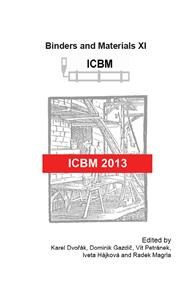p.69
p.73
p.77
p.83
p.87
p.93
p.99
p.103
p.109
Properties of Polyurethane and Epoxy Modified Cementitious Hybrids for Flooring Systems
Abstract:
This article focuses on a special kind of polymer modified mortars (PMM) which were developed especially for industrial floorings. These floorings are designed as self-leveling screeds, repair mortars or final coatings of the floor. The article investigates systems of two different binder systems (cement and PU or EP) with polymer-cement ratios between 0,2 to 0,75 [1-. Products of this range could be called cementitious hybrids. Polymers are added into cementitious mortars for different purpose. They are used mainly to improve performance of final product like the workability, adhesion, tensile strength and many other properties of cement materials. They combine several advantages compared to conventional materials like pure epoxy or self-leveling cementitious screeds. Hybrids also show good final properties like endurance against organic and inorganic acids, high abrasion resistance, good slip resistance, toughness etc.. This kind of material can be applied on relative water-saturated substrates or a few days old concrete without cracks or blister formation. It is also known, that properly designed formulations could provide a temporary moisture barrier, which is used to minimize osmotic blister formation in polymer based top coats caused by high moisture content of the substrate. The article elaborates progress of forming co-matrix of these cementitious hybrids. These show some improved properties like waterproofness and improved adhesion to the substrate compared to the conventional cementitious mortar without an organic binder. The general advantages of using this type of material for industrial floorings are also mentioned in the article.
Info:
Periodical:
Pages:
87-92
Citation:
Online since:
February 2014
Authors:
Price:
Сopyright:
© 2014 Trans Tech Publications Ltd. All Rights Reserved
Share:
Citation:


